MO Tested: Sprint Air Filter

Mixed results but still worth the investment
What’s the first thing motorcyclists look for when modifying their bike? More power. So, when we got an email claiming a 1 to 4 horsepower increase from Sprint Filter air cleaners, we decided to check it out. Our test mule would be my beloved 2003 Yamaha R6 that is still – as far as the fuel and exhaust systems are concerned – basically stock. (In the interest of full disclosure, it does have a set of Factory Pro Velocity Stacks that I’d forgotten about until I opened the airbox.) What better way to finally get my 13-year-old 600 to the dyno to see how it compares to current generation sporting hardware?
However, before we get to some actual numbers, let’s consider what makes the Sprint Filter P08 different from the other aftermarket filters using the familiar wire-lined folds. First, those other reusable aftermarket units may look similar, but their filter material is actually cotton fiber, which can, over time, break down – especially if it is not cleaned properly – reducing its ability to filter out anything smaller than the mouse turds left over from the nest your rodent friends made inside your bike’s airbox last winter. Okay, so maybe that’s not true, but if you don’t clean a cotton filter properly, it will shrink and develop gaps in its fiber. (Don’t believe me? Go dig your former favorite shirt – you know, the one that spent too long in the dryer – out of the bottom of your t-shirt drawer, and after you confirm that it still binds uncomfortably in your armpits, check the label. Yep, 100% cotton.)
What’s in the Sprint Filter P08 that makes it so great? Polyester, baby. Only not just any polyester. The polyester membrane filter material is really just a special fabric woven with 5-micron threads. Sprint claims the weave of the membrane delivers a consistent barrier as opposed to the more random spacing of cotton fibers – which then depend on filter oil to capture debris. Sprint Filters remain dry, and where oil filters need to be washed, dried (properly), and re-oiled as part of their regular maintenance, Sprint Filters need only to be blown out with compressed air from the clean side of the filter. Since the P08 doesn’t require oil, it is also immune to the power loss associated with over-oiling cotton filters. Sprint claims that, in laboratory testing, 93.13% of the particles of 100 microns were captured while cotton only blocked 76.42% of them.
Each of the claims about Sprint Filters requires special testing equipment, and we had access to the most important one, a dynamometer. So, we took the R6 to our usual dyno at MotoGP Werks to see if the horsepower saw an appreciable bump.
Before we go any further, a not-so-quick aside: My experience with aftermarket cotton filters of a couple different brands is that, without rejetting or EFI tuning, the results usually vary from minimal power increase to a noticeable power drop (usually due to an over-lean condition). Any change to your bike’s intake or exhaust system should have its mixture updated to get the most power from the set-up. At a media day for an aftermarket filter manufacturer, the representative saw that I had ridden in on a Honda Valkyrie and said he had a prototype sample of the company’s soon-to-be-released Valkyrie filter. In front of the assembled media, the filter was installed in the bike, and it was strapped to the dyno. The result was a 5-hp loss in power. Awkward.
The Sprint filter appears to be well-constructed. The pleats are uniform without some of the variation in spacing I’ve noticed in other aftermarket filters. It did, however, lack a label to inform first-time users which way the filter should lay in the airbox. (The rib on the edge should face down.) The fit had one issue, though. While the rubber-like material that secures the filtering material fit the portion of the airbox covers the throttle intakes perfectly, the gasket portion that encircled the ram-air duct was too large at the top edge, causing it to buckle inward and create an opening in the seal with the airbox halves. Performing a little razor-blade surgery to remove a couple millimeters of material solved the problem, but ensuring a proper fit shouldn’t be up to the consumer. After that, the airbox closed up just like it’s supposed to. Total filter swap time was 20 minutes – with five of those devoted to trimming the gasket.
The dyno runs were a mixture of meeting my expectations but with a surprise. The peak numbers of 102.68 hp and 43.64 lb-ft were both slightly higher than the stock numbers – but only by 0.08 hp and 0.87 lb-ft. For the most part, the hills and valleys in both the horsepower and torque curves were lessened with the Sprint Filter, but for much of the torque curve, it was lower. In some cases, say, in the bottom end between 3,500–4,500 rpm, the difference is 3.3 lb-ft or 12% and 1.4 hp or 8% . This happened to a smaller degree between 5,500–6,500 rpm and 8,000–9,000 rpm. One notable place where the Sprint’s output was better than the stocker’s is in the important 7,000–8,000 rpm range. This was a previously noticeable soft spot in urban riding. It will be interesting to see if this flatter section in the curve continues to feel smoother in the long term or will I miss the additional torque in the 5,500–6,500 rpm range more. Right now, I’m enjoying the flatter curve in this engine speed that I spend a lot of time in.
Looking at the air/fuel ratios on the the dyno runs reveals that the Sprint’s curve is smoother, too. In all the instances where the stock filter made more power, the air/fuel ratio was leaner than the Sprint’s mixture, and the biggest jumps were where the mixture was the leanest. Setting up a custom EFI curve with a Power Commander or similar fuel modulator would surely fill in some of those holes in the powerband, but then the stock-to-modified comparison would be unfair.
As it stands, the Sprint Filter P08 for the 2003 R6 produces slightly (very slightly) more peak power but less horsepower and torque in the mid-range – where a street bike spends most of its time. So, would I recommend it? I give it a qualified yes, for two reasons: First, it softened a flat spot that had often bothered me in my day-to-day riding. While there is a loss of torque just prior to that rpm range, tractable power is more important to me on the street.
If my R6 were a exclusively a track bike, I might feel otherwise – but then I’d also have a pipe and Power Commander installed, enabling me to develop a custom map to minimize those shortcomings. Second, the $92 retail price is only a 50% premium over stock for a filter that should outlive my bike – a practical benefit I can appreciate. Also, when I’m doing some work that has me taking off the airbox, the simplicity of just blowing the filter clean with compressed air will make me more likely to do it while I’m in there. I’ll just have to figure out what to do with the filter cleaner and oil that I have in my garage from my racing days. The hassle of having to modify the filter gasket was a bummer, but it only took about five minutes to fix. Consequently, I find the Sprint Filter to be a worthwhile investment for my basically stock bike.

Like most of the best happenings in his life, Evans stumbled into his motojournalism career. While on his way to a planned life in academia, he applied for a job at a motorcycle magazine, thinking he’d get the opportunity to write some freelance articles. Instead, he was offered a full-time job in which he discovered he could actually get paid to ride other people’s motorcycles – and he’s never looked back. Over the 25 years he’s been in the motorcycle industry, Evans has written two books, 101 Sportbike Performance Projects and How to Modify Your Metric Cruiser, and has ridden just about every production motorcycle manufactured. Evans has a deep love of motorcycles and believes they are a force for good in the world.
More by Evans Brasfield



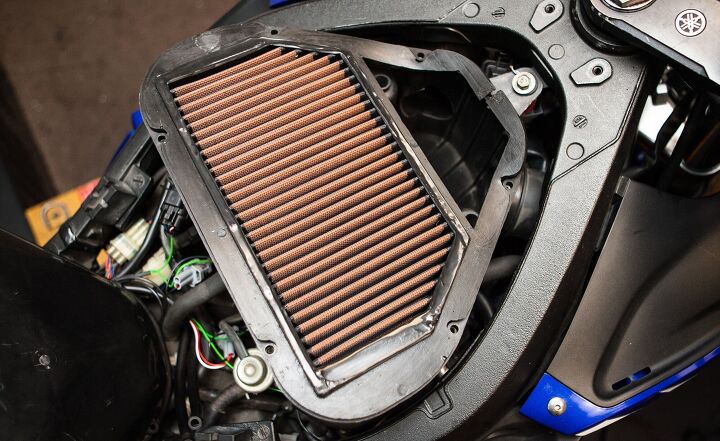

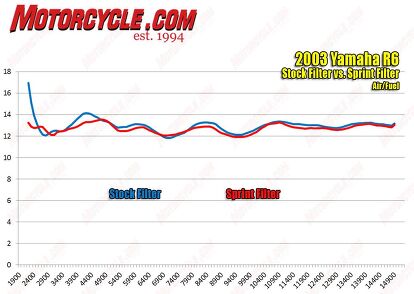





















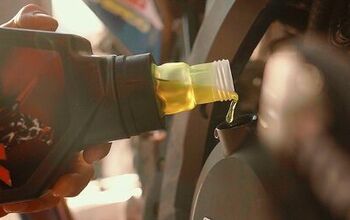
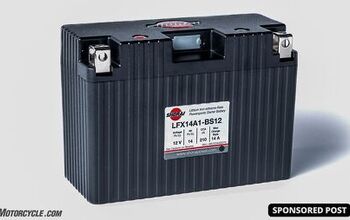


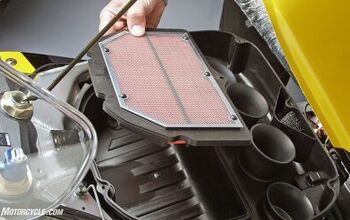
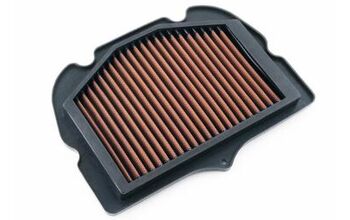

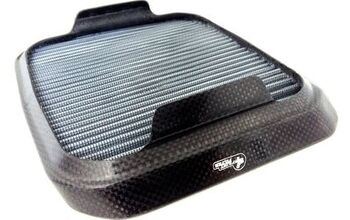










Comments
Join the conversation
I can't determine if they're bullshitting, or bullshitting..
Really? .08HP gain? You'll gain more acceleration or top speed from shaving your butt hair than this!
Oh, and I think the readout is highly subjective to the bike.
Most bikes aren't restrictive in the air intake, but if they are, the fluxuations you see on the graph could very well be from rich points in the carburetor with stock filter (eg: when pilot jet goes to mid- jet, and mid goes to main jet.)
On a bike that's running lean, running an air filter that's non-restrictive compared to stock, the bike might actually lose power.
Also, the temperature changes. Doing a run at the first 5-10 minutes of bike operation can give a few HP's difference compared to a bike fully warmed up.
What gets me, is that the reviewer gets excited for his gain in HP, which to me, seems like he's either super unintelligent, or he's really just trolling the internet.
Where the sprint filter shines is with aftermarket exhaust, Just putting in air filter is 1-2 Hp at best.